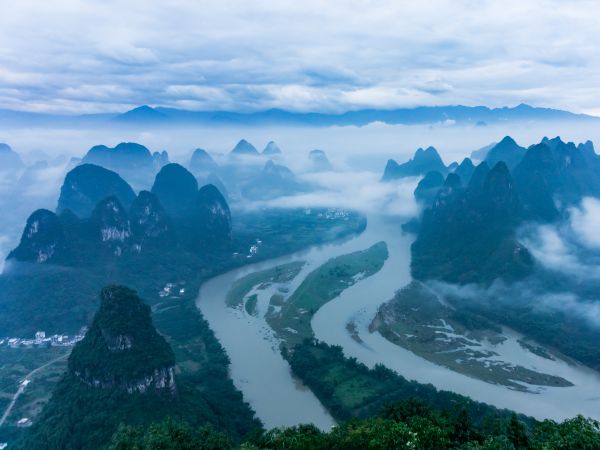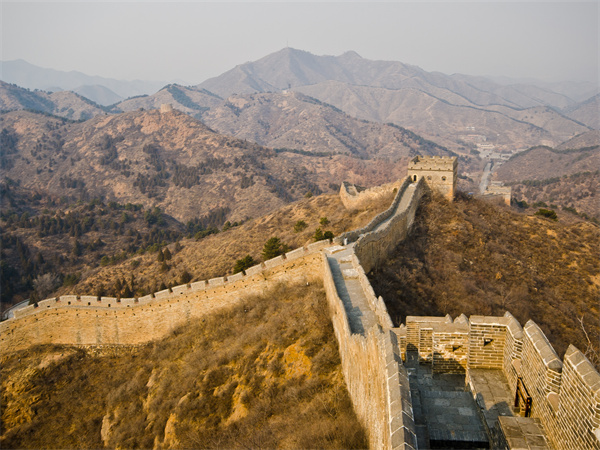China's Climate | The Best Time to Travel China
China has a continental monsoon climate, characterized by warm and humid springs, hot and rainy summers, cool and dry autumns, and cold and windy winters. In this article, we’ll summarize key climate information, highlight the best times to visit, and provide tips on what to prepare before your trip.

China Climate Summary
Given China's vast territory, its climate is somewhat complicated. Climate and weather conditions vary in different regions and change with the seasons. Traveling to China allows you to experience the different climates and seasonal changes in different parts of the country. Most regions of China are located in a continental monsoon climate zone. Geographically, the southern areas are in tropical or subtropical zones, while the northern areas are in cold zones.
In general, most parts of China experience the four distinct seasons. Spring is from March to May, summer from June to August, autumn from September to November and winter from December to February. Geography causes northerly winds to blow from high latitude areas, resulting in cold, dry winters in the north. While in summer, the southern coastal monsoons bring heat and humidity.

Climate in Northern China
Most of northern China has a temperate continental climate, with some areas featuring a plateau climate. Therefore, winter is cold and summer is hot, with a large temperature difference between the seasons and even between day and night. Precipitation is scarce, and rainy days are mainly concentrated in the summer.
For destinations like Beijing and Urumqi, summer is dry and sweltering, while winter is extremely cold. Sometimes in April, sandstorms occur in northern China, especially in the Beijing area.
Tips for travelers visiting northern China
- Typically, late summer and autumn are the best times to visit, with mild weather and stunning scenery (except in Harbin, where the International Ice and Snow Festival is held each winter).
- In case of sandstorms or fog, you can prepare yourself with a gauze mask.

Climate in Northwest China
Climatic characteristics: Northwest China has an arid and semi-arid climate. Rain is scarce and evaporation is high. There is abundant sunlight throughout the year, which brings intense ultraviolet radiation. Therefore, when traveling to destinations such as Xi'an, Dunhuang, Jiayuguan, it is important to protect yourself from the sun and be aware of the drop in temperature due to the large difference between day and night.
Tips for travelers visiting northwest China
- Summer and early fall are the best times to visit.
- Be prepared with sunscreen, face cream, windbreaker and other necessary items.

Climate in Southern China
The climatic characteristics of southern China include a tropical monsoon and subtropical climate, with high temperatures and much rain in summer, and a temperate climate with less rain in winter.
In places like Guangxi (Guilin), Guangdong (Guangzhou and Shenzhen), winter days are shorter and relatively comfortable. The hot and humid season lasts longer than elsewhere, usually from April to October. Destinations such as Kunming, Guiyang and Dali have a mild climate all year round.
Tips for your trip to South China
- All year round is suitable for traveling.
- Most regions experience the rainy season from May to August, so it is advisable to wear appropriate clothing, footwear and a raincoat.
- Typhoons frequently hit southeastern coastal areas (such as Shanghai, Hangzhou, Guangdong) between July and September. Therefore, it is important that you pay attention to the weather forecast when planning your trip to China, to avoid unexpected surprises.

In summary, the climate in northwest China is typically arid and dry, more similar to Central Asia than East Asia. In contrast, winters in Tibet can be extremely cold and windy, while temperatures vary greatly during the summer, even in a single day. On the other hand, the climate in southern China is more humid, with warm days lasting longer, and winters being shorter and milder.

















